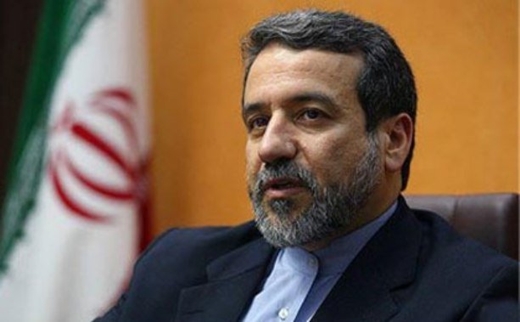Iran and P5+1 (the five permanent members of the UN Security Council plus Germany) reached a deal on July 14, 2015, that went into effect last January to give Tehran sanctions relief in return for curbing its nuclear program.
The curbs included a pledge to keep the uranium stockpile under 300 kg of up to 3.67% enriched uranium hexafluoride, also known as UF6, the form in which uranium can be enriched in centrifuges.
Iran’s nuclear energy organization released a statement on Saturday, announcing that its nuclear scientists have begun injecting gas into advanced IR-8 centrifuges.
Commenting on the move, Abbas Araqchi, a senior nuclear negotiator who is the deputy foreign minister for legal and international affairs, said the launch of “the advanced machine, which is at least 24 times more powerful than the IR-1 model, marks a turning point in enrichment research and development in Iran.”
“IR-6 and IR-8 machines that are being tested with the uranium gas will determine the future of the country’s enrichment industry,” Araqchi wrote on his Instagram page on Sunday, IRNA reported.
The deal says, “Iran will continue testing IR-6 and IR-8 centrifuges, and will commence testing of up to 30 IR-6 and IR-8 centrifuges after eight and a half years”.
Cutting by two-thirds the number of centrifuges installed at Fordo and Natanz enrichment facilities was also among measures agreed upon by the Islamic Republic so the UN nuclear agency can give the green light for the pact to go into full force.
Ali Akbar Salehi, the head of Atomic Energy Organization of Iran, said earlier this month that Iran will soon take delivery of 130 tons of natural uranium, the first such consignment since the implementation of the deal.
Araqchi had announced plans in August 2015 to produce the required fuel for five to six nuclear reactors using its IR-8 centrifuges in the next 15 years.
“Most countries’ development plans are for 10 years, but we will probably present a 15-year nuclear development plan to the agency [IAEA], based on which Iran will produce one million SWUs [Separative Work Units] of nuclear fuel at the end of the program, which will be sufficient for running five to six nuclear reactors,” Araqchi told a parliamentary meeting at the time.
